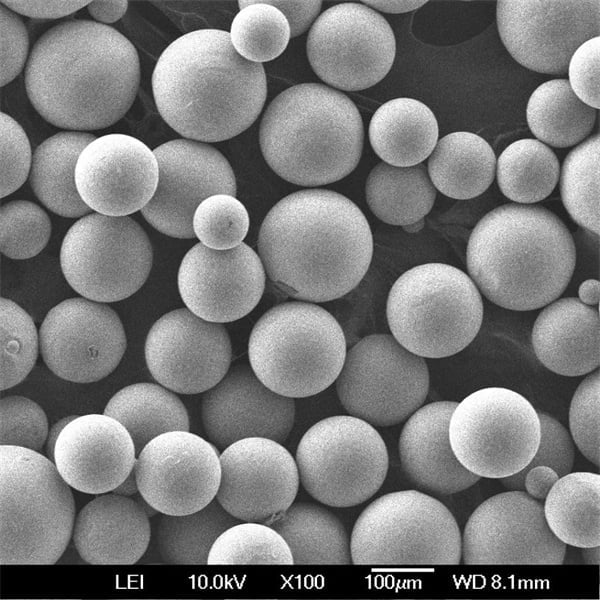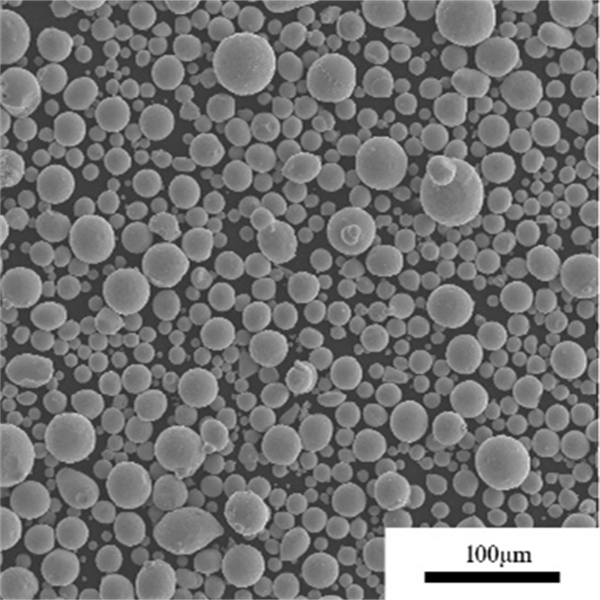Understanding Plasma Gas Atomizers
Table of Contents
Plasma gas atomizers play a crucial role in the production of high-quality metal powders used in various industries, from aerospace to medical implants. This guide will take you through the intricacies of plasma gas atomizers, their applications, advantages, and limitations, as well as provide detailed information about specific metal powder models.
Overview of Plasma Gas Atomizers
Plasma gas atomizers utilize plasma gas to melt and atomize metal materials into fine powders. This technology ensures the production of highly spherical, uniform particles with excellent purity. The key process involves melting the metal in a high-temperature plasma arc, followed by rapid cooling and solidification, resulting in fine metal powders suitable for advanced manufacturing processes like additive manufacturing (3D printing), thermal spray coatings, and more.
Key Characteristics of Plasma Gas Atomizers
Plasma gas atomizers are known for their ability to produce powders with:
- High sphericity and smooth surfaces
- Uniform particle size distribution
- High purity and low contamination
- Excellent flowability and packing density

Table of Common Metal Powders Produced by Plasma Gas Atomizers
| Metal Powder Model | Composition | Particle Size Range (µm) | Applications | Key Properties |
|---|---|---|---|---|
| Ti-6Al-4V | Titanium alloy | 15-45 | Aerospace, Medical Implants | High strength, corrosion resistance |
| Inconel 625 | Nickel alloy | 20-50 | Aerospace, Chemical Processing | Heat resistance, corrosion resistance |
| 316L Stainless Steel | Stainless Steel | 10-50 | Medical, Food Processing | Biocompatibility, corrosion resistance |
| CoCrMo | Cobalt-Chromium alloy | 15-45 | Medical Implants | High wear resistance, biocompatibility |
| AlSi10Mg | Aluminum alloy | 20-60 | Automotive, Aerospace | Lightweight, good mechanical properties |
| CuSn10 | Copper-Tin alloy | 10-45 | Electrical Components, Bearings | High electrical conductivity, good wear resistance |
| NiCr | Nickel-Chromium alloy | 15-50 | Thermal Spray Coatings | High temperature resistance, oxidation resistance |
| FeSi | Iron-Silicon alloy | 10-50 | Magnetic Applications | High magnetic permeability, low core loss |
| MgAl | Magnesium-Aluminum alloy | 20-60 | Aerospace, Automotive | Lightweight, high strength-to-weight ratio |
| WC-Co | Tungsten Carbide-Cobalt | 10-45 | Cutting Tools, Wear Parts | Extreme hardness, wear resistance |
Applications of Plasma Gas Atomizers
The unique properties of metal powders produced by plasma gas atomizers make them suitable for a variety of applications. Here are some key industries and uses:
| Application | Industry | Description |
|---|---|---|
| Additive Manufacturing (3D Printing) | Aerospace, Medical, Automotive | Produces complex, high-strength components with minimal material waste. |
| Thermal Spray Coatings | Aerospace, Power Generation | Provides protective coatings that enhance surface properties like wear and corrosion resistance. |
| Metal Injection Molding (MIM) | Medical, Electronics | Allows for the production of small, intricate metal parts with high precision. |
| Powder Metallurgy | Automotive, Tools | Produces high-performance metal parts through compacting and sintering processes. |
| Electronics | Electronics, Telecommunications | Utilizes metal powders for conductive inks and coatings in electronic devices. |
| Catalysts | Chemical Processing | Uses metal powders as catalysts in chemical reactions for increased efficiency. |
Specifications, Sizes, Grades, and Standards
| Metal Powder Model | Specifications | Available Sizes (µm) | Standards |
|---|---|---|---|
| Ti-6Al-4V | ASTM B348, ISO 5832-3 | 15-45 | ASTM F2924 |
| Inconel 625 | ASTM B443, UNS N06625 | 20-50 | ASTM F3056 |
| 316L Stainless Steel | ASTM F138, ISO 5832-1 | 10-50 | ASTM F3184 |
| CoCrMo | ASTM F75, ISO 5832-4 | 15-45 | ASTM F1537 |
| AlSi10Mg | DIN EN 1706, ISO 3522 | 20-60 | ASTM F3318 |
| CuSn10 | ASTM B505, EN 1982 | 10-45 | ASTM B584 |
| NiCr | ASTM B168, UNS N06600 | 15-50 | ASTM B733 |
| FeSi | ASTM A848, DIN EN 10293 | 10-50 | ASTM A572 |
| MgAl | ASTM B107, SAE AMS 4377 | 20-60 | ASTM B951 |
| WC-Co | ASTM B777, ISO 4499 | 10-45 | ASTM B93/B93M |
Suppliers and Pricing Details
| Supplier | Metal Powder Model | Price Range (USD/kg) | Location |
|---|---|---|---|
| AP&C | Ti-6Al-4V | 200-300 | Canada |
| Sandvik | Inconel 625 | 250-350 | Sweden |
| Carpenter Technology | 316L Stainless Steel | 150-250 | USA |
| Höganäs | CoCrMo | 300-400 | Sweden |
| LPW Technology | AlSi10Mg | 100-200 | UK |
| Tekna | CuSn10 | 50-100 | Canada |
| Oerlikon Metco | NiCr | 200-300 | Switzerland |
| Rio Tinto Metal Powders | FeSi | 50-100 | Canada |
| Magnesium Elektron | MgAl | 150-250 | UK |
| Kennametal | WC-Co | 400-600 | USA |
Comparing Pros and Cons of Plasma Gas Atomizers
| Aspect | Advantages | Limitations |
|---|---|---|
| Powder Quality | High sphericity, Uniform particle size, High purity | Initial setup cost is high, Requires precise control |
| Production Efficiency | Rapid cooling and solidification, High throughput | Energy-intensive, Complex maintenance |
| Material Versatility | Can handle various metal alloys | Limited by plasma generator capacity, Some materials might react with plasma |
| Application Range | Suitable for advanced manufacturing | Requires specialized equipment for handling powders |
| Environmental Impact | Produces less waste compared to other methods | High energy consumption, Safety concerns with fine powders |
Advantages of Plasma Gas Atomizers
- High-Quality Powders: Plasma gas atomizers produce powders with excellent sphericity, uniform particle size, and high purity. This quality is essential for critical applications in aerospace, medical implants, and additive manufacturing.
- Versatility: Capable of atomizing a wide range of metals and alloys, plasma gas atomizers cater to diverse industries, from automotive to electronics.
- Efficiency: The process allows for rapid cooling and solidification, resulting in high throughput and efficient production rates.
- Reduced Waste: Compared to other methods, plasma gas atomization generates less waste, making it a more sustainable option.
Disadvantages of Plasma Gas Atomizers
- High Initial Cost: The setup and operational costs for plasma gas atomizers can be significant, which may be a barrier for smaller enterprises.
- Energy Consumption: The process is energy-intensive, which can lead to higher operational costs and a larger environmental footprint.
- Complexity: Maintaining and operating plasma gas atomizers requires specialized knowledge and expertise, adding to the complexity of the process.
- Safety Concerns: Handling fine metal powders can pose safety risks, including fire hazards and health issues related to inhalation of fine particles.

FAQ
| Question | Answer |
|---|---|
| What is a plasma gas atomizer? | A device that uses plasma gas to melt and atomize metal materials into fine powders with high sphericity and uniform particle size. |
| Which metals can be atomized using plasma gas atomizers? | A wide range, including titanium alloys, nickel alloys, stainless steels, cobalt-chromium alloys, aluminum alloys, and more. |
| What are the main applications of metal powders produced by plasma gas atomizers? | Additive manufacturing, thermal spray coatings, metal injection molding, powder metallurgy, electronics, and catalysts. |
| Why are plasma gas atomizers preferred for high-quality powder production? | They produce powders with high sphericity, uniform particle size, high purity, and excellent flowability, which are essential for advanced manufacturing processes. |
| What are the challenges associated with plasma gas atomizers? | High initial and |
Share On
MET3DP Technology Co., LTD is a leading provider of additive manufacturing solutions headquartered in Qingdao, China. Our company specializes in 3D printing equipment and high-performance metal powders for industrial applications.
Inquiry to get best price and customized Solution for your business!
Related Articles
About Met3DP
Recent Update
Our Product
CONTACT US
Any questions? Send us message now! We’ll serve your request with a whole team after receiving your message.

Metal Powders for 3D Printing and Additive Manufacturing
COMPANY
PRODUCT
cONTACT INFO
- Qingdao City, Shandong, China
- [email protected]
- [email protected]
- +86 19116340731

















